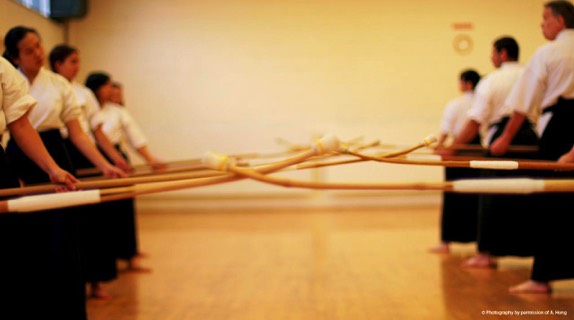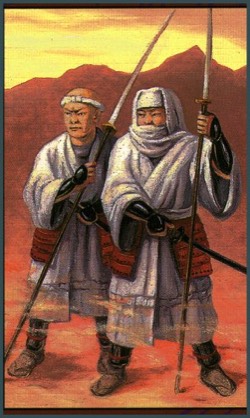
The Sohei (Buddhist Monks) used the naginata extensively.
The Naginata is a weapon with a rich history, utilized and refined from the Nara Period (710-784 A.D.) to today. Employed initially by the Bushi, it later found itself the specific weapon of the Sohei or Buddhist monks. It is the school of the spear and, as such, is a shafted weapon. The length of its oval shaft varied, from 5' to 8', depending on battle conditions and personal requests. The most striking feature, however, was the blade; it could be anywhere from 10 inches to more than 2 feet, and was sharpened on a single side, fashioned in the manner of either Sakizori or Uchizori. As with most shafted weapons, it was most devastating when utilizing sweeping, circular motions. However, thrusts with the blade and also the heavy ishizuki on the butt end were acceptable tactical alternatives.
The naginata, a halberd-like weapon, was used extensively in feudal Japan. Described by some as simply "a sword on the end of a long pole", the naginata was actually a sophisticated weapon which required considerable skill and stamina to use effectively in battle. It consisted of a curved blade, 1 to 2 feet in length, mounted onto an oak shaft that was usually 5 to 9 feet long. The actual dimensions of a naginata were primarily dependent on personal preferences and battle conditions. Attached to the butt end of the shaft was a sharp end-cap, or ishizuki, which was used to pierce between the plates of an attacker's armor.
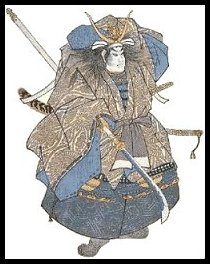
The second theory is that the naginata evolved directly as a weapon. The first prototype blades were most likely made of bronze, followed later by steel. This theory sets the development of the naginata well after the introduction of metal to Japan from the Asian continents (after 200 BC).
The third theory is that Chinese halberds were carried to Japan during early migrations, sometime around 200 BC. By the Han and Wei Dynasties (approximately 200 AD) these weapons closely resembled the type of naginata eventually used by Japanese warriors. Some historians believe that, although the Chinese may have invented the weapon, it was later developed, utilized, and refined by the Japanese.
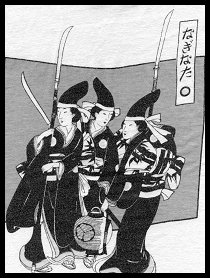
The introduction of firearms into Japan in the mid-17th century significantly altered battlefield strategies, and the naginata gradually became a weapon used solely by women for protection in their homes. Naginata training was also used as a means of exercise and character development. During the Edo period, a time of relative peace in feudal Japan, Japanese women from samurai families were required to master the naginata by age 18. By this time, naginata were usually ornately decorated, and were considered an essential part of a woman's dowry.
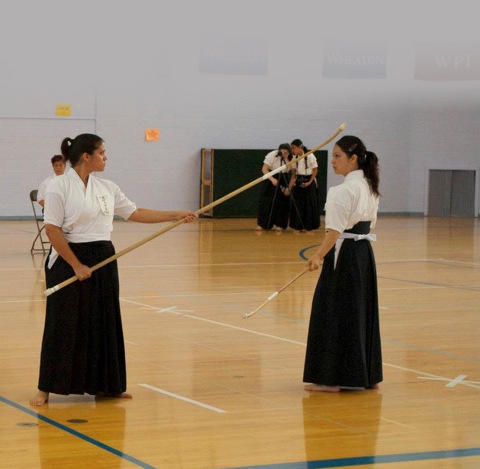
Today, for obvious reasons, the practice of naginata-jutsu has its limitations, and out of this has grown the practice of naginata-do, known as Atarashii Naginata, a powerful yet graceful form -- the practice of which nurtures stamina, grace of movement, and the building of character through discipline and concentration. Practice and study envelope two main divisions, Kata and Shiai:
Kata is designed to teach the correct form of the basic techniques of the weapon. The rendition of Naginata used here is carved from oak to more fully represent the original weapon, complete with mock blade.
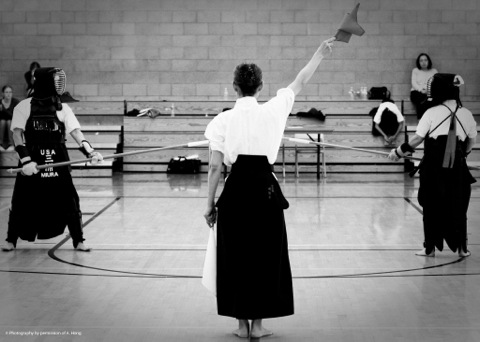
In Shiai, protective equipment similar to that worn in Kendo is employed, with the addition of Suneate (shin guards). The naginata used in Shiai is comprised of a light, oval, oak shaft topped by two strips of curved bamboo. The end of the shaft and bamboo tip is protected by a small leather sleeve.
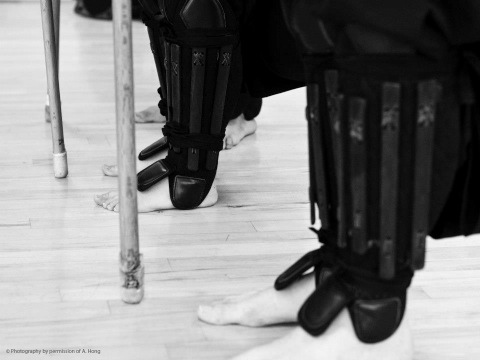
In the daily practice of Naginata, we enlist various training methods. For example, Shikake-Oji is a series of pre-arranged movements, each involving a sequence of attacks, parries and ripostes. Eye contact, Kiai (an aspect of breath control resembling a shout) and Zanshin (mental alertness) are also integral.
